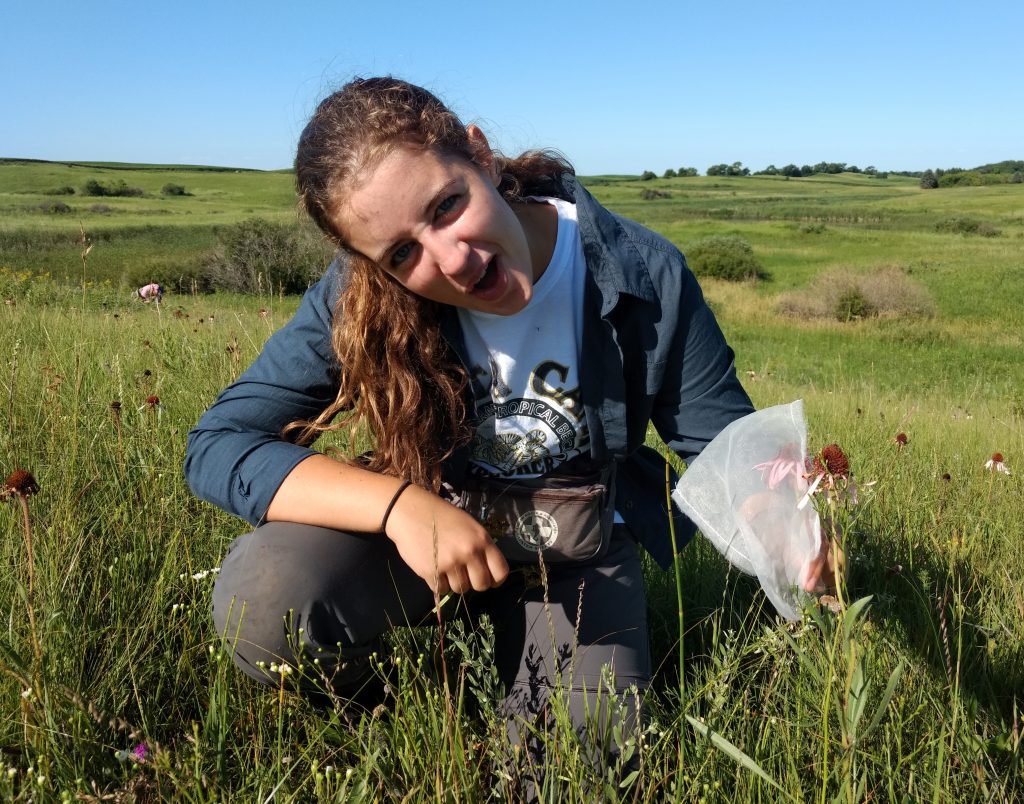In 2019 Team Echinacea conducted a new experiment called “Pulse-Steady,” with roots in Ashley Barto’s 2017 REU project. The experiment investigates whether flowering Echinacea plants which received a resource pulse (pollination every three days) set seed at a different rate to Echinacea which received a steady flow of resources (pollination every day.)

Stuart and Gretel selected 48 flowering Echinacea with single flowering heads and assigned 24 to the pulse treatment, and the other 24 to the steady treatment. The team placed pollinator exclusion bags on the heads of all plants prior to the beginning of flowering to ensure that humans were the only pollinators. The team returned to exPt 2 every day from July 16 to August 7 to count anthers and styles and hand-pollinate the 48 heads, though rain caused pollen to present at strange times or not at all on some days. The team collected pollen from other flowering plants in exPt2 as well as bagged heads around Hegg Lake. Pollen samples included a minimum of four sires to ensure that compatible S-alleles were present in the mix. Pollinators collected additional pollen from heads in the experiment after pollinating the styles, to prevent self-pollen from clogging the styles and to replenish dwindling pollen supplies. Human pollinators frequently competed with insect pollinators, as pollen was scarce at the end of the flowering season, and had to wave off bees from taking pollen from experimental heads and pollen donors in the plot.
In December, Carleton externs Jack, Eli and Emma worked on a modified ACE protocol to process the harvested pulse-steady heads. They cleaned the heads and carefully separated the achenes based on their position in the head so that we can investigate whether seed set differs at the beginning, middle and end of flowering between the treatments, as well as whether seed set differs based on style “freshness” in the pulse treatment. They also scanned the heads with achenes separated out by location in the head.
Start year: 2019
Location: exPt 2, Douglas County, MN
Overlaps with: Flowering phenology in experimental plots, common garden experiment
Data/materials collected: The team harvested 48 heads in the experiment which have been cleaned and are ready to be randomized and x-rayed at the CBG. Each head has 8 envelopes associated with it (7 envelopes of achenes and 1 of chaff.)
Maps and datasheets for the field experiment are located at ~Dropbox\teamEchinacea2019\pulseSteady
The cleaning protocol and datasheets relevant to cleaning are located at ~Dropbox\CGData\150_clean\clean2019\inb2PulseSteady

Leave a Reply